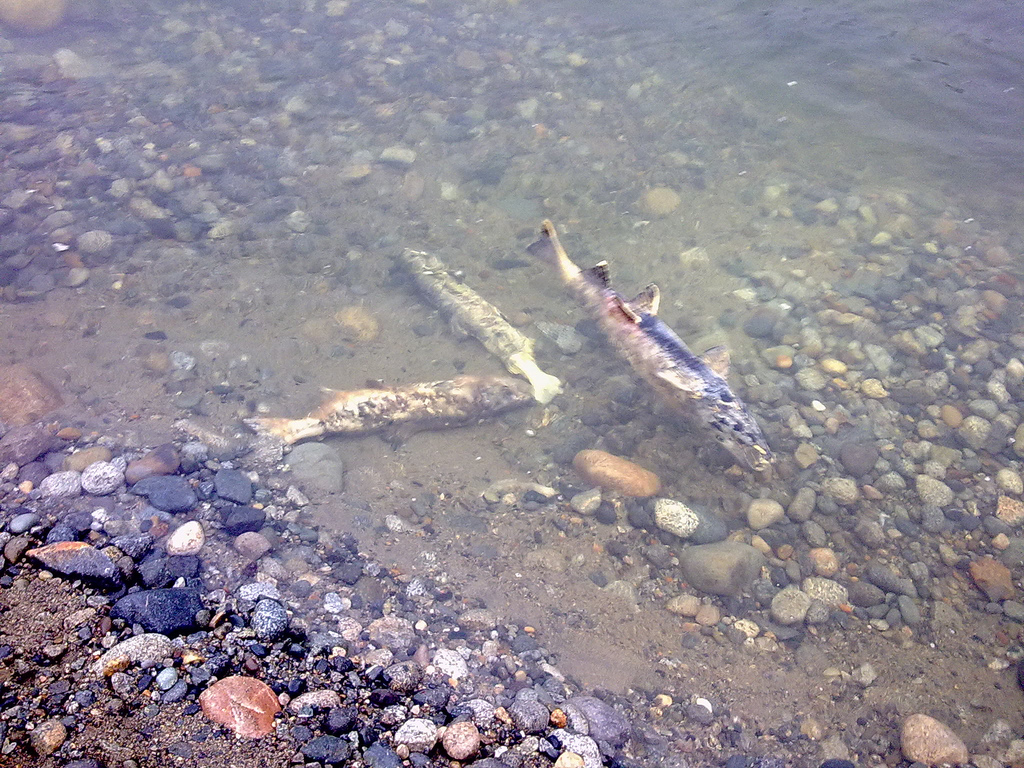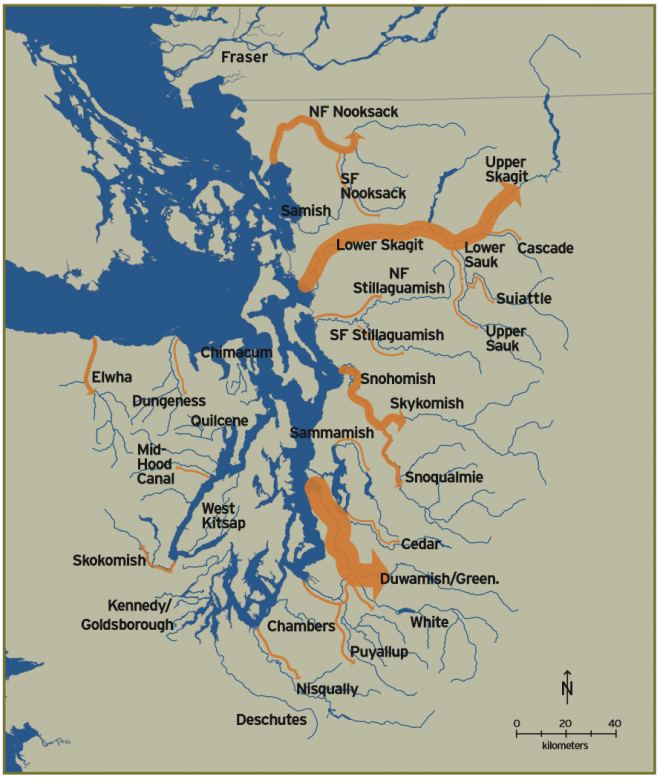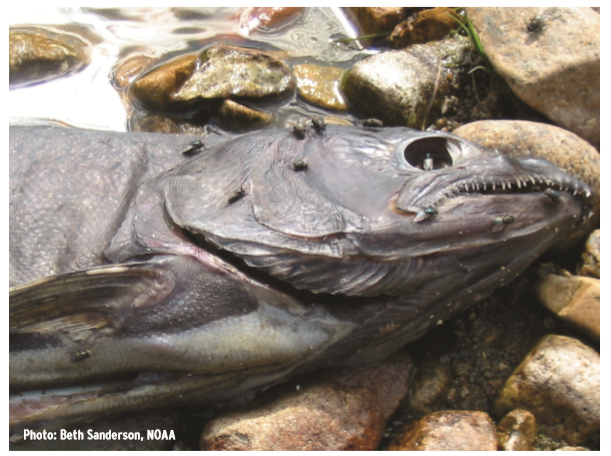Transfer of nutrients in the ecosystem
Decaying organic matter plays an important role in marine ecosystems.

Nutrients originating from decomposing vegetative and animal matter are an important and necessary part of ecosystem function in Puget Sound. However, human activities have accelerated and concentrated many of these processes. Elevated levels of nutrients entering Puget Sound come from point sources such as sewage-treatment plants and paper mills, or non-point sources including fertilizers, septic systems, and animal waste. When nutrient traffic loads are excessive, and combine with low circulation rates and topographic barriers, site-specific problems may arise, such as the hypoxia conditions in Hood Canal and south Puget Sound.
Although freshwater runoff is a primary pathway for nutrient transport from terrestrial to marine environments, the thousands of mobile animals in Puget Sound, such as insects, birds, and fish, are also effective transfer agents of energy. Moreover, these transfers can occur in both directions and return nutrients from the ocean to freshwater and terrestrial environments. Birds feeding at sea and nesting and roosting on land can transport large quantities of nutrients (Cederholm et al. 1999). Anadromous fish such as salmon also carry nutrients back from the marine environment up into freshwater and terrestrial habitats, enriching food webs far from the sea. The life histories of these Puget Sound species reflect their biological requirements to move back and forth between terrestrial, freshwater, and marine habitats depositing substantial quantities of nutrients in the process.
Pacific salmon (Oncorhynchus spp.) accumulate most of their body mass in the sea, which is transported to freshwater lakes and streams around the Pacific Rim when these fishes return to spawn.

As most species of this genus generally die after spawning, the nutrients and organic matter contained in their body tissues and reproductive products are deposited near the spawning grounds. Research has shown that the annual deposition of salmon-derived nutrients contributes to the productivity of freshwater and riparian communities throughout the Pacific coastal region.

These nutrients can be incorporated into the stream food web through direct consumption of carcass tissue by fish or invertebrates or uptake of the dissolved chemicals released during decomposition of carcasses (Bilby et al. 2001). Salmon-derived nitrogen comprised from 10% to 20% of the nitrogen in some species of fish and invertebrates in a western Washington salmon stream (Bilby et al. 1996), and reaches much higher proportions in Alaskan systems supporting greater abundances of spawning fish (Kline et al. 1990).
References
Ben-David M., T.A. Hanley, D.M. Schell. 1998 . Fertilization of terrestrial vegetation by spawning Pacific salmon: the role of flooding and predator activity. Oikos 83: 47-55
Bilby R.E., B.R. Fransen, J.K. Walter and W.J. Scarlett. 2001. Preliminary evaluation of the use of nitrogen stable isotope ratios to establish escapement levels for Pacific salmon. Fisheries 26(1): 6-14
Bilby, R.E., B.R. Fransen, and P.A. Bisson. 1996. Incorporation of nitrogen and carbon from spawning coho salmon into the trophic system of small streams: Evidence from stable isotopes. Canadian Journal of Fisheries and Aquatic Sciences 53: 164-173
Cederholm, C.J., D.B. Houston, D.L. Cole and W.J. Scarlett. 1989. Fate of Coho salmon (Oncorhynchus kisutch) carcasses in spawning streams. Canadian Journal of Fisheries and Aquatic Sciences 46(8): 1347-1355
Cederholm C. J., M.D. Kunze, T. Murota, A. Sibatani. 1999. Pacific salmon carcasses: Essential contributions of nutrients and energy for aquatic and terrestrial ecosystems. Fisheries 24: 6-15
Kline, T.C., J.J. Goering, O.A. Mathisen, P.H. Poe, P.L. Parker. 1990. Recycling of elements transported upstream by runs of Pacific salmon. 1. Delta-N-15 and Delta-C-13 evidence in Sashin Creek, southeastern Alaska. Canadian Journal of Fisheries and Aquatic Sciences 47: 136-144
Wunderlich, R.C., B.D. Winter, and J.H. Meyer. 1994. Restoration of the Elwha River ecosystem. Fisheries 19(8): 11-19



